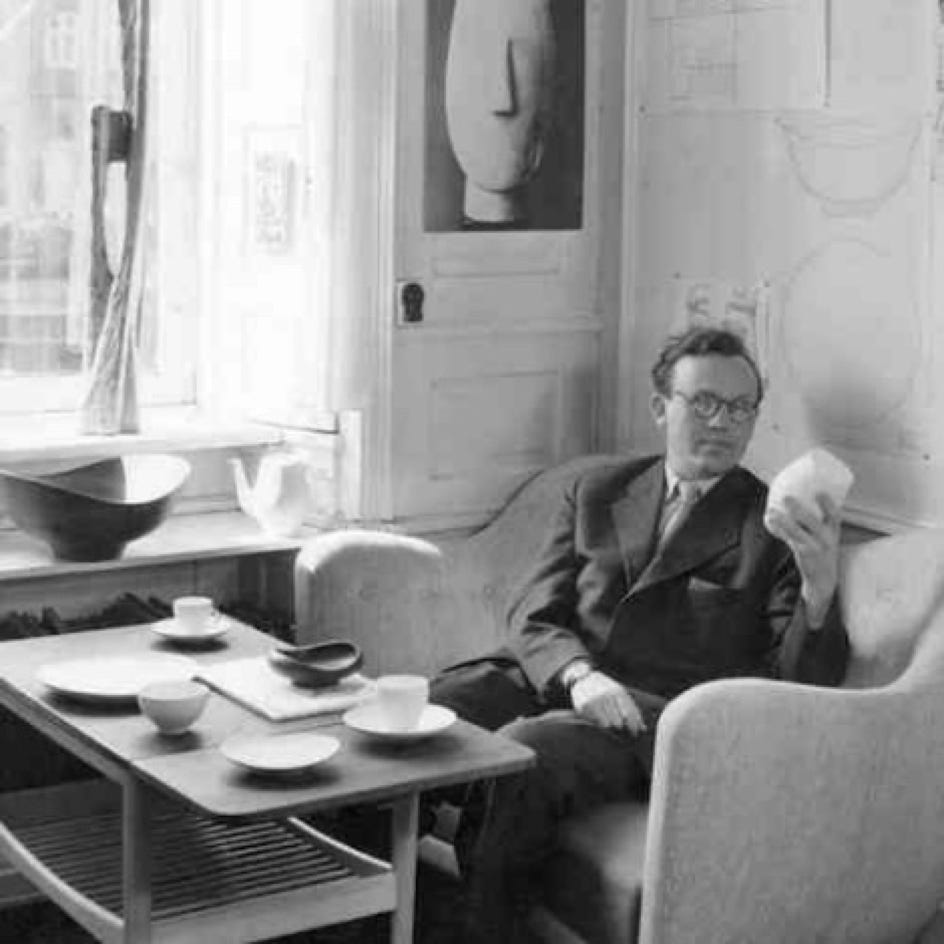15% off with DESIGN15


Designed by Finn Juhl in 1957, the 57 sofa was the first of his models to be relaunched by House of Finn Juhl. Its sculptural silhouette is dominated by high armrests that curve around the seat, creating a comfortable, cosy space.
The sofa was first exhibited in Copenhagen's Tivoli Gardens in 1957, and it would be over 40 years before it was offered for sale.
In 1999, Finn Juhl's widow, the music and theatre publisher Hanne Wilhelm Hansen, wanted to include it in an exhibition marking the 10th anniversary of her husband's death. She contacted House of Finn Juhl and commissioned a one-off edition of the sofa, based on his designs.
This was the beginning of an extraordinary partnership between Hanne Wilhelm Hansen and the publisher, to whom she subsequently entrusted exclusive manufacturing rights for all Finn Juhl furniture.
The 57 sofa is made with hand-sewn textile or leather upholstery. The seat is fitted with springs. The legs are available in burnished steel or stainless steel, with walnut or oak end caps.
Dimensions 234 x 83 x H86 cm – Seat height 38 cm
Materials stainless steel or burnished steel with oak or walnut end caps

57 Sofa
from
Hallingdal 764 + Hallingdal 110
Hallingdal 100 + Hallingdal 457
Hallingdal 980 + Hallingdal 960
Watercolour Peacock + Watercolour Soft Linen
Remix 762
Remix 0123
Remix 823
Remix 412
Remix 242
Vidar 723 + Vidar 1511
Vidar 152 + Vidar 1062
Vidar 633 + Vidar 582
Vidar 1511 + Vidar 443

As a teenager, Finn Juhl (1912-1989) wanted to become an art historian after having been fascinated by fine arts since childhood. His father prevented him from doing so and he studied architecture. Later, once his reputation as a furniture designer had been acquired, he would speak of himself as a self-taught man, certainly in reference to this thwarted vocation which forced him to make his intellectual journey alone. His very singular style owes much to this non-linear trajectory, with a very unacademic interpretation of art visible in his work. Finn Juhl began his studies in 1930, a key period that saw the birth of modern design and furniture.
His ultra-modern offices in the center of Copenhagen greeted visitors with a huge Japanese paper fish, a symbol of imagination. And rather than approaching furniture design from a functional, classical perspective, Finn Juhl approached his work as a sculptor. He sought beauty in volume and form, life and expressiveness. An approach that in the 1940's and 1950's was totally unprecedented. For Finn Juhl, it was clear that a piece of furniture could not be limited to a function, but also had to express an artistic sensibility.
While he remains world-famous for his furniture, Finn Juhl also designed several interior architecture projects and a few industrial products, including IBM typewriters. His greatest commercial success was with the Baker Company in the United States, which allowed him to mass-produce several pieces of furniture.
As an architect, he is known for the interior design of the United Nations Council in New York.